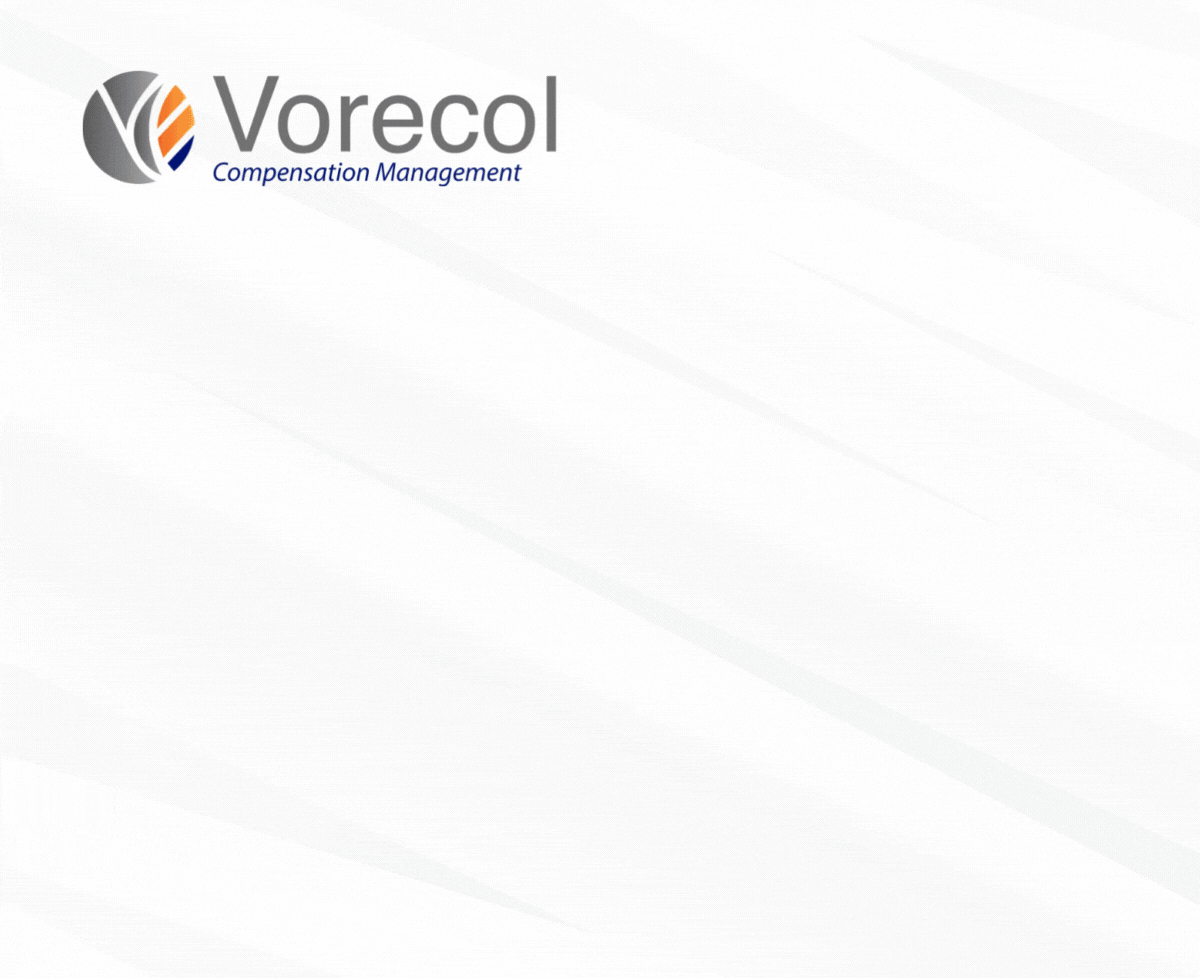Best Practices for Implementing Total Compensation Software in Global Organizations

- 1. Understanding Total Compensation Software: Key Features and Benefits
- 2. Assessing Organizational Needs: Customizing Solutions for a Global Workforce
- 3. Ensuring Compliance: Navigating Legal and Cultural Differences
- 4. Integration Strategies: Seamlessly Connecting with Existing Systems
- 5. Training and Support: Empowering Employees for Effective Use
- 6. Measuring Success: KPIs for Evaluating Total Compensation Software
- 7. Continuous Improvement: Adapting to Evolving Business Needs
- Final Conclusions
1. Understanding Total Compensation Software: Key Features and Benefits
Imagine a bustling office where employees are hustling to meet their deadlines, yet there's a subtle buzz of discontent lingering in the air. What could be the cause? Often, it boils down to one pivotal aspect: how their total compensation is structured and communicated. Total compensation software plays a crucial role in bridging this gap by providing a transparent overview of not just salaries, but also bonuses, health benefits, and other perks. With an empowered understanding of their earnings, employees feel more valued, engaged, and motivated. It’s no wonder that businesses investing in sophisticated solutions for compensation management are seeing a significant boost in employee satisfaction and retention.
Now, let’s talk about the key features that make total compensation software a game changer. Imagine having all the intricate details of compensation neatly organized, easily accessible, and secure. Such software often includes robust analytics, allowing HR teams to track compensation trends and make informed decisions. For instance, Vorecol compensation, a cloud-based module of the HRMS Vorecol, offers seamless integration of compensation data with other HR functions, making it easier for organizations to manage and communicate their compensation strategies. This not only enhances efficiency but fosters a culture of transparency where employees understand their worth and appreciate their benefits, leading to a more harmonious workplace.
2. Assessing Organizational Needs: Customizing Solutions for a Global Workforce
Imagine a bustling international office where team members from different continents collaborate daily, each with their own unique cultural backgrounds and expectations. Did you know that nearly 60% of companies report challenges in effectively assessing their organizational needs for a global workforce? This staggering statistic highlights the importance of understanding diverse employee requirements and tailoring solutions accordingly. In today's interconnected world, having a one-size-fits-all approach is no longer viable. Organizations must prioritize customization to engage their workforce fully and enhance productivity.
To navigate this complex landscape, tools like Vorecol compensation in the cloud can be invaluable. This module of the HRMS Vorecol streamlines the administration of compensation and benefits, allowing companies to tailor their offerings to meet the specific needs of employees across different regions. By clearly understanding what motivates their diverse teams, organizations not only foster inclusivity but also drive performance and retention. So, as you consider your organization's approach to addressing its unique needs, remember that leveraging the right technology is key to building a more cohesive and effective global workforce.
3. Ensuring Compliance: Navigating Legal and Cultural Differences
Imagine this: you're leading a global project team, and everything seems to be going smoothly until one day, you receive a sudden email from your colleagues in a different country. They’re expressing confusion over a compliance requirement you thought was straightforward back home. This scenario is more common than you might think. According to recent research, over 60% of international businesses face significant challenges when adapting to the legal and cultural nuances of foreign markets. Navigating these differences is crucial, as misunderstanding local laws or cultural expectations can lead to hefty fines or damage to your brand reputation.
In today's interconnected world, ensuring compliance is not just a box to check; it’s a competitive advantage. Companies that are proactive in understanding and integrating local laws and cultures tend to foster stronger relationships with their employees and clients alike. Investing in the right tools, like Vorecol's cloud-based compensation module, can streamline your HR processes, ensuring your compensation and benefits align with both local regulations and employee expectations. This way, you can focus on what really matters: building a cohesive team that thrives across borders, adhering to legal standards while respecting diverse cultural practices.
4. Integration Strategies: Seamlessly Connecting with Existing Systems
Picture this: a bustling office filled with employees who are frustrated by multiple systems that just don’t talk to each other. It’s a common scenario in today’s tech-driven world, where integration strategies can make or break the efficiency of an organization. Companies that successfully connect their existing systems not only streamline operations but create a more harmonious work environment for their staff. According to a recent study, organizations with seamless integrations reported up to a 30% increase in productivity. Imagine transforming that chaos into clarity, where every department—from HR to finance—can access up-to-date information at their fingertips.
Now, you might wonder how to achieve that level of synergy without overhauling your entire infrastructure. One effective approach is adopting cloud-based solutions that complement your current systems, like Vorecol compensation. This module within the Vorecol HRMS offers a smooth way to manage compensation and benefits while ensuring integration with existing workflows. The beauty of a well-executed integration strategy is that it fosters innovation and agility, allowing businesses to pivot and adapt without losing momentum. So, if you’re looking to enhance your organization’s connectivity, consider how integrating new solutions can elevate your operations, making life easier for everyone involved.
5. Training and Support: Empowering Employees for Effective Use
Have you ever considered how much more motivated employees could be if they truly understood the tools and resources at their disposal? Imagine a scenario where a new software implementation occurs, and while it promises to streamline processes and boost productivity, employees are left in the dark, struggling with the learning curve. It's not uncommon to hear that a whopping 70% of digital transformations fail due to lack of adequate training and support. This statistic highlights the vital need to empower employees with the right knowledge and skills to effectively use these tools, ensuring smooth transitions and ultimately leading to higher job satisfaction and performance.
When organizations invest in comprehensive training and support systems, they’re not just enhancing knowledge; they’re building confidence among their workforce. By providing modular training programs that cater to different learning styles, companies can create a culture where every employee feels competent in utilizing available resources. For instance, with an intuitive platform like Vorecol's compensation module, which streamlines the management of compensation and benefits, staff can easily navigate their options and understand their value. This not only simplifies administration but also allows employees to feel secure and recognized within their roles, leading to greater retention and overall success for the organization.
6. Measuring Success: KPIs for Evaluating Total Compensation Software
Have you ever wondered how companies can determine if their compensation packages are truly effective? Picture a thriving tech startup, where the CEO proudly announces a generous raise and bonus structure. Yet months later, Employee Satisfaction Surveys reveal that the team feels undervalued and overworked. This disconnect highlights the critical need for Key Performance Indicators (KPIs) in evaluating total compensation software. KPIs are essential metrics that help organizations measure the effectiveness of their compensation strategy, ensuring that it aligns with employee expectations and overall business goals.
When it comes to tracking success, establishing clear KPIs can make all the difference. For instance, monitoring employee retention rates, engagement scores, and salary competitiveness can provide insight into how well your compensation software is performing. Tools like Vorecol Compensation, a module within the Vorecol HRMS, can streamline this process, allowing businesses to analyze compensation data with ease. By regularly assessing these indicators, companies can make informed decisions that not only enhance their compensation strategies but also foster a motivated and committed workforce.
7. Continuous Improvement: Adapting to Evolving Business Needs
Imagine walking into a bustling office environment, where every team member is not just present but actively engaged in dynamic discussions about how to optimize processes and improve outcomes. This scenario reflects a critical trend in the business landscape: continuous improvement. According to a study by the Harvard Business Review, companies that actively embrace ongoing enhancement strategies have seen up to 30% higher productivity rates. This is not merely about fine-tuning operations; it's about fostering a culture where adaptation is second nature, allowing businesses to respond swiftly to evolving market demands and customer expectations.
One effective way companies are achieving this is through innovative tools that streamline HR processes. Take, for instance, the Vorecol compensation module, part of the comprehensive Vorecol HRMS. Companies that leverage such technology can manage compensation and benefits more efficiently, ensuring they remain competitive and attractive to top talent. By integrating continuous improvement mindsets with advanced solutions, organizations not only enhance employee satisfaction but also position themselves to thrive amidst change. This blend of human capital management and adaptive strategies is key to navigating the complexities of today's business world.
Final Conclusions
In conclusion, implementing total compensation software in global organizations requires a strategic approach that aligns with both organizational goals and regional nuances. By fostering clear communication, involving key stakeholders across departments, and ensuring compliance with local regulations, companies can create a seamless transition to this robust system. Effective training and ongoing support are essential components, equipping employees to fully leverage the software’s capabilities and enhancing overall engagement with compensation processes.
Moreover, continuously evaluating and refining the software implementation is crucial for sustaining its impact. This involves collecting feedback from users, monitoring performance metrics, and staying abreast of evolving compensation trends worldwide. By adopting a proactive and agile mindset, organizations can ensure their total compensation software not only meets current needs but also adapts to future challenges, thereby strengthening their competitive edge in the global marketplace. Ultimately, a well-executed implementation strategy will enhance transparency, simplify processes, and contribute to a more engaged and satisfied workforce.
Publication Date: September 3, 2024
Author: Psicosmart Editorial Team.
Note: This article was generated with the assistance of artificial intelligence, under the supervision and editing of our editorial team.
Leave your comment
Comments
Request for information



